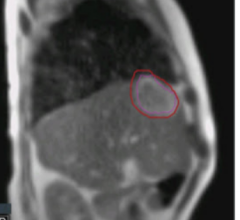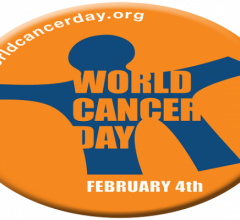March 6, 2007 - Research recently presented at the Society of Interventional Radiology's thirty-second Annual Scientific Meeting shows that the non-surgical image-guided treatment of kidney tumors, cryoablation which pushes argon gas to the tip of the probe and extracts heat from surrounding cells, freezing and killing the tumor, is as effective as the laparoscopic technique and results in a shorter hospital stay.
If you enjoy this content, please share it with a colleague
Related Content
This is Reflexion’s X1 LINAC radiotherapy system on display at ASTRO 2021. It recently gained FDA clearance for standard ...
October 30, 2018 - Displayed for the first time at American Society for Radiation Oncology (ASTRO) 2018 annual meeting ...
Respiratory tumor motion often complicates the delivery of precision radiation treatment. Over the past two decades ...
Endomag, the surgical guidance company, received 510(k) clearance from the U.S. Food and Drug Administration (FDA) to ...
World Cancer Day takes place annually on Feb. 4 to raise awareness and education in the media, governments and people ...
Radiation planning for breast cancer relies on accurate delineation of the post-lumpectomy target volume as identified on non-contrast axial computed tomography (CT). Visible seroma, surgical clips and adjacent tissue are typically included when contouring the lumpectomy clinical target volume for radiation treatment. Radiation oncologists and treatment planners face challenges that can make clear delineation of the lumpectomy cavity problematic.
El Camino Hospital (Mountain View, Calif.) announced the installation of a new Calypso 4-D Localization System and will soon be able to treat patients with certain soft tissue cancers using this precise radiation technology.
In a paper published in Nature Reviews last week, Axel Hoos, M.D., Ph.D., laid out the current immunotherapy development paradigm, as well as his strategic vision to optimize the implementation of next-generation immunotherapies.
Philips announced IntelliSpace Portal 8.0, the latest edition of its advanced data sharing, analytics and visualization platform that helps radiologists detect, diagnose and follow up on treatment of diseases.
New research from Johns Hopkins School of Medicine reveals a high value for scans which could lead to future change of reimbursement policies for follow-up positron emission tomography/computed tomography (PET/CT) studies in lung cancer. The study, featured in the February 2015 issue of The Journal of Nuclear Medicine, establishes the value of fourth and subsequent follow-up PET/CT scans in clinical assessment and management change in patients with the disease.


 November 11, 2021
November 11, 2021 







